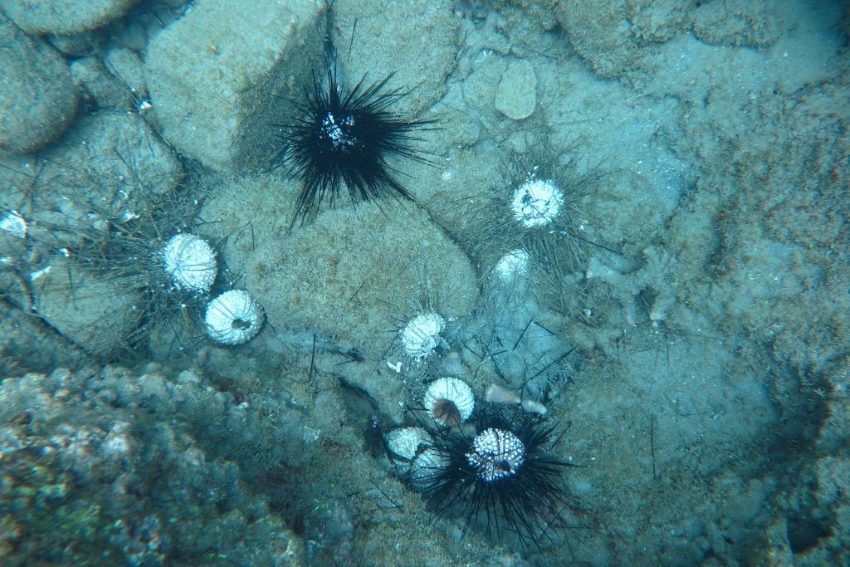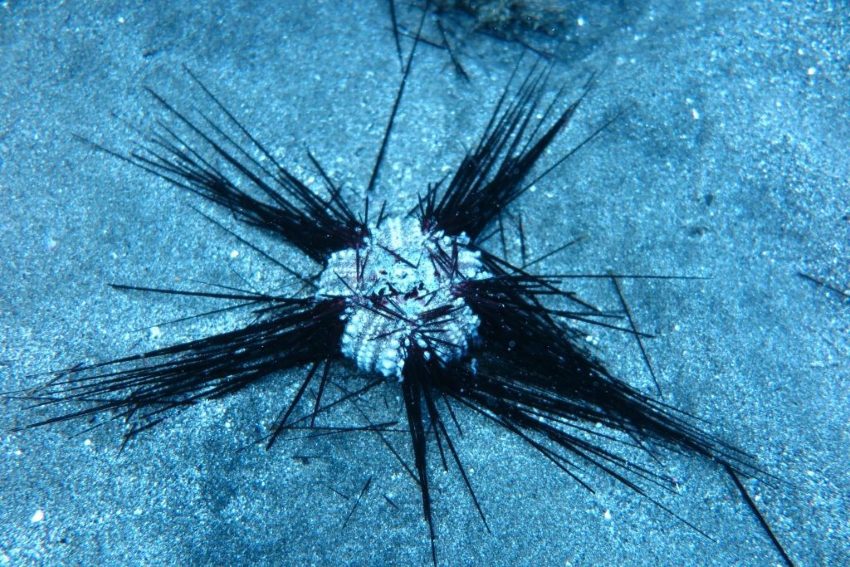
Experts at the Coastal Zone Management Unit (CZMU) are closely monitoring the first signs of local die-offs of the long-spined sea urchins (Diadema antillarum), known as cobblers, in the Sandy Lane, St. James, area on April 18.
To date, this has been the only location reported to have sick sea urchins in Barbados’ waters, and there is no indication that the agent causing this has any effect on humans or other marine life.
However, CZMU officials are urging mariners, divers and fishermen to pay close attention, and report any sightings of sick or dying sea urchins to the Unit, through the use of the Diadema Die-off form. They may also access the from through the resources tab on the CZMU website, and click on the link for the Sea Urchin Die-off Report.
Persons may also access further information about the events via the website of the Atlantic and Gulf Rapid Reef Assessment (AGRRA) Progamme.
CZMU officials pointed out that sick sea urchins will show signs of having excess mucous on their spins; the loss of their tube feet; the inability to attach to substrate (may be swept off substrate and float in the water); have a loss of spines, and show signs of tissues sloughing off (the black colouration of the urchins falls off to reveal white skeleton).
Once dead, the urchins will cease to adhere to the substrate, exhibit no movement of the spines when touched, and the completely white skeleton is exposed with no spines.
The CZMU explained that the mortality events pose a great threat to the stability of coral reef ecosystems as urchins play a vital role in reef health.
“Along with parrotfish (chubs), urchins act to control the amount of algae present on coral reefs. Without the presence of these creatures, algae can become the dominant feature on coral reefs, out-competing corals for space,” the CZMU indicated.

Officials gave the assurance that the Unit was monitoring the situation and staying abreast of scientific updates relating to the mortality events.
Since February, concerns emerged about the massive die-offs of the long-spined sea urchins throughout the Caribbean.
To date, the death of the sea urchins has been recorded in St. Thomas, Saba, St. Eustatius, Jamaica, St. Vincent, Puerto Rico, Dominica, and Saint Lucia.
The cobblers are said to be dying at a rapid rate with approximately 50 per cent of the population within the Saba Harbour dying within a week.
In addition, there are also reports that other species, such as the sea egg (Tripneustes ventricosus), and the pencil urchin (Eucidaris tribuloides), are also exhibiting signs of illness, but not to the extent of those being experienced by the long-spined urchin.
Similar events occurred in the early 1980s, resulting in the demise of many urchin populations across the region. The cause of that large mortality event was never determined and very few populations have since fully recovered. The cause of the current mortality events also remains unknown, and there are no known methods of treatment.
